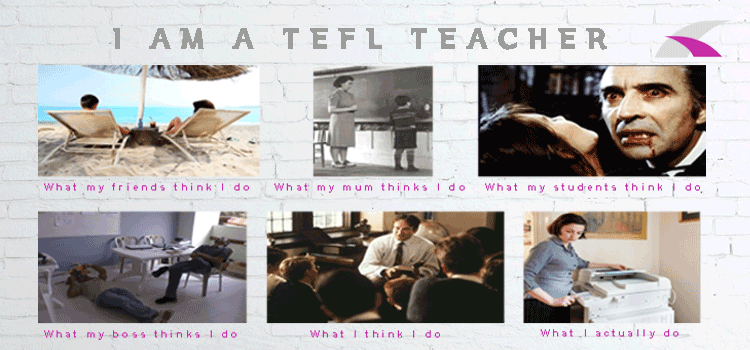15 January 2016 / by Rafael Olivares
The joys and tribulations of web classes
It's 8:30 in the morning. Your 3 students from Valencia, Zaragoza and Barcelona are getting ready for a web class.
In half an hour, they will all be enjoying their 30 minute web class with each other and their favorite teacher. No, they will not be commuting to Madrid at the speed of sound in order to be together in class by 9:00, nor will they spend small fortunes on transport getting to and from the class back to their homes. "How can this be?", you ask.
Well, like practically any other sector, the advancements of technology and the internet have finally caught up with the teaching profession, forcing us to reevaluate the way we teach in an increasingly digital world where the most valuable currency is often time.
Over the last few years, more and more platforms have been popping up to fill our students' needs for good teachers and good web classes from anywhere in the world. You can opt for one of these free platforms, such as Skype share screen or a similar feature available at Google Chrome. However, only a few centers are developing their own tools and platforms for delivering highly personalized online classes. As teachers, having a platform designed specifically for us and with en end user in mind (the students), this gives us the freedom to take advantage of all these technological advancements and give them a pedagogical focus. Gone are the days of the archaic gap fill exercises, giving way to more interactive resources such as apps with content you can drag and rearrange. Explaining visually or through audio is made much simpler by using your computer as a resource with your students.
Other than the limitless possibilities of online technologies, the surface of which we've only just began to scratch, there are some undeniable practical advantages for both teachers and students. However, if every cloud has a silver lining, then every silver lining must have a cloudy side too. Here are some of the joys and tribulations plaguing teachers and students in online web classes.
The teacher's joys: Besides the limitless possibilities of using new technologies to improve our teaching, there are some practical implications that cannot be ignored. Consider the previous example with 3 students from 3 different cities. Thanks to online classes by videoconference, teachers get to make themselves available to students from all over Spain and indeed, the world. This is a much larger ocean on which teachers can go fishing for new students, allowing them to create schedules that best suit their needs.
There is also the very practical advantage of completely eliminating traveling time from your schedule. In a world where we are weighing whether or not to include a person's commute as part of their work schedule, it is a great luxury to be able to rise above all the stress and sorrow that comes from your daily trip, or trips to work.
Let us not forget the benefit of a dress code. There is something oddly satisfying about being able to teach all of your lessons from the comfort of your pyjamas, while keeping it strictly business from the waist up.
However, for all their perks, online web classes still have some bugs that need fixing like anything else online.
The teacher's tribulations: You are able to connect with several people at the same time, the key word there being connecting. No matter how good a teacher you are and how well you've prepared your class, a bad internet connection will destroy the pace of any class. Giving instructions or making corrections becomes next to impossible and it is a struggle to establish basic communication. Even if your internet connection is solid, you are still only as good as your weakest link, or in this case, the student with the worst connection. Add to that the flexible nature of online classes, which allows you to take them from your home with fiber optic or from a hotel at a convention with 100 other users connected to the same wifi, and you have a perfect recipe for some frustrating sessions for you or your students.
While there are many resources we can use to present information online, sometimes there is still no substitute for face to face interaction. Body language is much harder to use to your advantage when limited to such a small frame in a screen. There are also people who are still reluctant to new technologies and respond much better with more traditional approaches. This leads me to discuss the other side of the coin, the pros and cons for the students.
Students' joys: As I mentioned earlier, in today's busy society, time is money. Juggling extremely busy personal and professional schedules leaves students little time for self improvement. The little free time they do have is often unpredictable and limited.
The number of in-person teachers that are willing to work under such unpredictable conditions is not very large, and there is a real risk of sacrificing quality teaching for something as basic as availability. With online classes, students can have access to far wider options, allowing them to find the teacher that best suits their needs, whether that teacher is your neighbour or lives in Australia.
By removing traveling from the equation, classes can also be scheduled under a more flexible basis, regardless of unforeseen business trips or last minute changes in the schedule.
Students' tribulations: While online teaching empowers students in terms of the control they have over their lessons and progress, we've only just began to scratch the surface of the potential they have. The technology is already available, but how to maximize its usage to deliver the best content possible is still a bit of an experiment. Once the teaching practice successfully systematizes all these new apps and teaching tools, web classes by videoconference have the potential of becoming just as good, if not better, than any in person class. However, the gaps between technology and teaching, even our own shortcomings in regards to technology, can hinder class progress when comparing it to in person classes.
Personal feelings aside, it is hard to deny that the future of teaching probably lies online!








